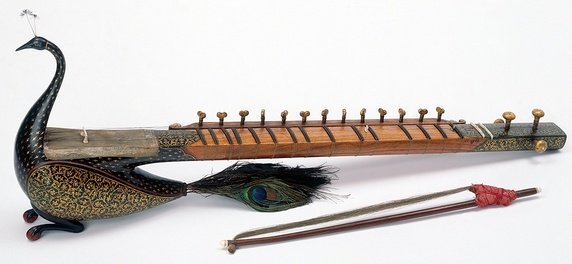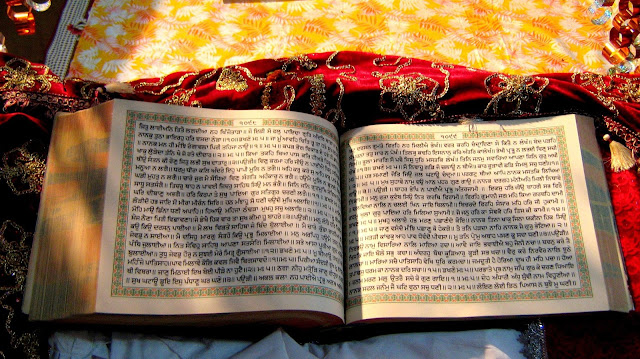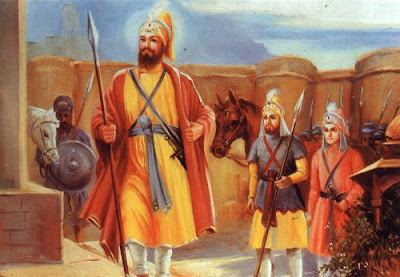On 350th birth anniversary of Guru Gobind Singh Ji, 10th and the last Guru of Sikhism, we are sharing some must read facts about the holy saint.
Today is the 350th birth anniversary of Guru Gobind Singh Ji, 10th and the last Guru of Sikhism. Originally, he was born on 22nd December 1666 (Julian Calendar) as Gobind Rai, but his birth anniversary falls in the month of January as per the lunar calendar. His teachings have been an inspiration to the entire Sikh community; his preaching and values have been carried across from generations to generations.
On this special day people from different religions visit Gurudwaras to pray and celebrate the birth anniversary as Prakash Parv. Celebrations are quite simple just like all Gurudwara celebrations, it consist of prayers, langar and parsad.
On his 350th birth anniversary, we bring to you some amazing facts about Guru Gobind Singh Ji:
1. He was the son of ninth Guru of Sikhism, Guru Teg Bahadur and Mata Gujri, took birth in Patna Sahib or Takht Sri Patna Sahib (now in Patna).
2. Guru Gobind Singh Ji was just 9 year old when he was named as the 10th Guru of Sikhism after his father Guru Teg Bahadur was martyred by Emperor Aurangzeb for protecting the rights of Kashmiri Hindus.
3. By the age of 19, Guru Gobind Singh learned many languages including Sanskrit, Urdu, Hindi, Braj, Gurmukhi and Persian. He also learned martial arts. Guru Gobind Singh Ji loved art, it's because of this love that he also invented musical instruments “Dilruba” and “Taus”
4. His compositions and poetry are too good compared to present poetry. When he was just 19, he composed “Jaap Sahib”. The vocabulary that was used stressed on just one fact i.e. universalism.
5. He fought many battles but there was no mean or political motive; these battles were against oppression, weaknesses and injustice. He strongly believed that a sword must be used only when other methods fail.
He was a master in archery and weapons. In fact, he had the most expensive and unique weapons that time. Many Sikhs might not be knowing about his javelin named “Nagni Barcha” that Bhai Bachittar Singh used for attacking a mad elephant which Mughal forces had sent for attacking Sikhs in Chamkaur fort.
6. On March 30 in 1699, Guru Gobind Singh gathered his followers to his home in Anadpur. He asked for a volunteer to sacrifice his head for his brothers. Daya Ram offered his head and the Guru took him inside a tent and later emerged with a bloody sword. He again asked for a volunteer and repeated the feat. This went on for three more times. At last, Guru emerged from the tent with the five volunteers and five headless goats were found in the tent. These five Sikh volunteers were named as Panj Pyaare or 'five beloved ones' by the Guru. The five volunteers were Daya Ram, also known as Bhai Daya Singh; Dharam Das, also known as Bhai Dharam Singh; Himmat Rai, also known as Bhai Himmat Singh; Mohkam Chand, also known as Bhai Mohkam Singh; and Sahib Chand, also known as Bhai Sahib Singh. They were the first Sikhs.
7. Later, Guru Gobind SIngh founded the Khalsa Vani - "Waheguru ji ka Khalsa, Waheguru ji ki fateh". He named all his followers with the title Singh, meaning lion. He also founded the principles of Khalsa or the Five 'K's. The five 'K's are the five principles of life that are to be followed by a Khalsa. These include Kesh or hair, which means to leave the hair uncut to show acceptance to the form God intended humans to be; Kangha or wooden comb, as a symbol of cleanliness; Kara or iron bracelet, as a mark to remind a Khalsa of self-restraint; Kacchera or knee-length shorts, to be worn by a Khalsa for being always ready to go into battle on horseback; and Kirpan, a sword to defend oneself and the poor, the weak and the oppressed from all religions, castes and creeds.
8. After repeated conflicts with Garwali and Mughal leaders, Guru Gobind Singh wrote a letter to Aurangzeb in Persian, which was later famously named as Zafarnama or the Epistle of Victory, reminding him of the misdeed the Mughals had done to the Sikhs. He fought against the Mughals later in battle of Muktsar in 1705. After Aurangzeb's death, Guru Gobind Singh no longer remained an adversary to the Mughals. The next Mughal emperor, Bahadur Shah was friendly with Guru Gobind at first. He even named the Guru as Hind Ka Pir or the Saint of India. But later on, Bahadur Shah was influenced by Wazir Khan, Nawab of Sirhind, to attack the Sikh community. Wazir Khan sent two Pathan assassins Jamshed Khan and Wasil Beg to attack the Guru during his sleep at Nanded, the Guru's resting place. They stabbed Guru Gobind Singh in his sleep. The Guru killed Jamshed, the attacker, with his sword, while other Sikh brothers killed Beg.
9. Guru Gobind Singh named Guru Granth Sahib Ji (the religious text of the Khalsas and the Sikhs) as the next Guru of the two communities. He left his bodily form and on October 7 in 1708.
10. He is also known as “Sarvansh Dani”. This is because he sacrificed his life and family only for fighting against oppression and wrongdoings. For him, the whole Khalsa community is his sons and daughters























